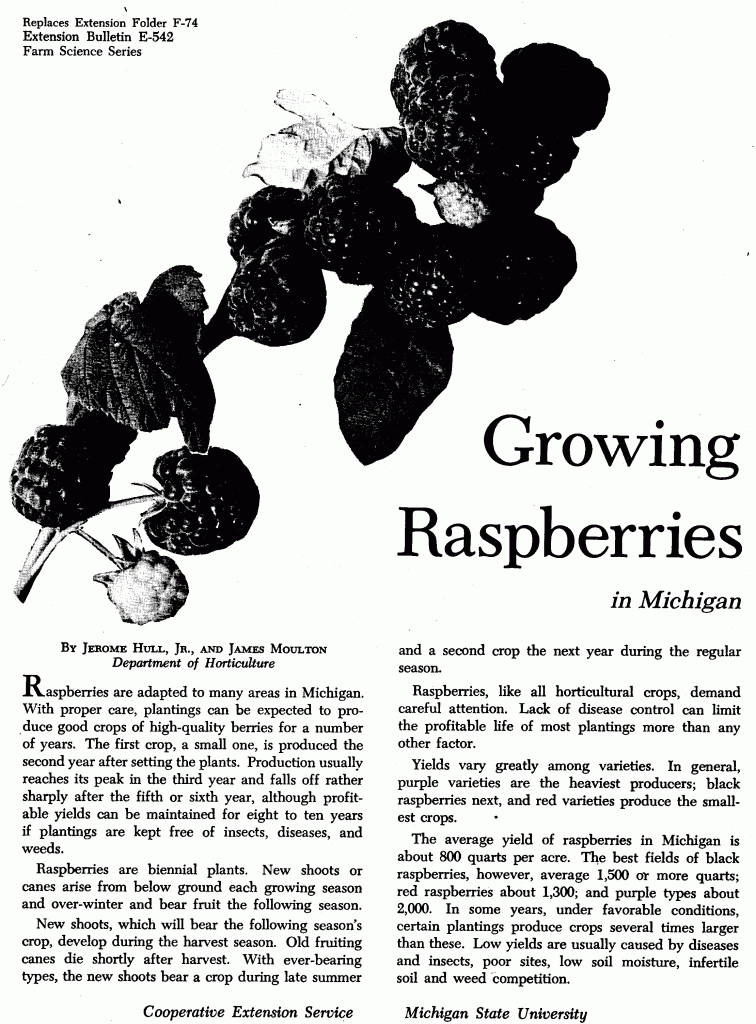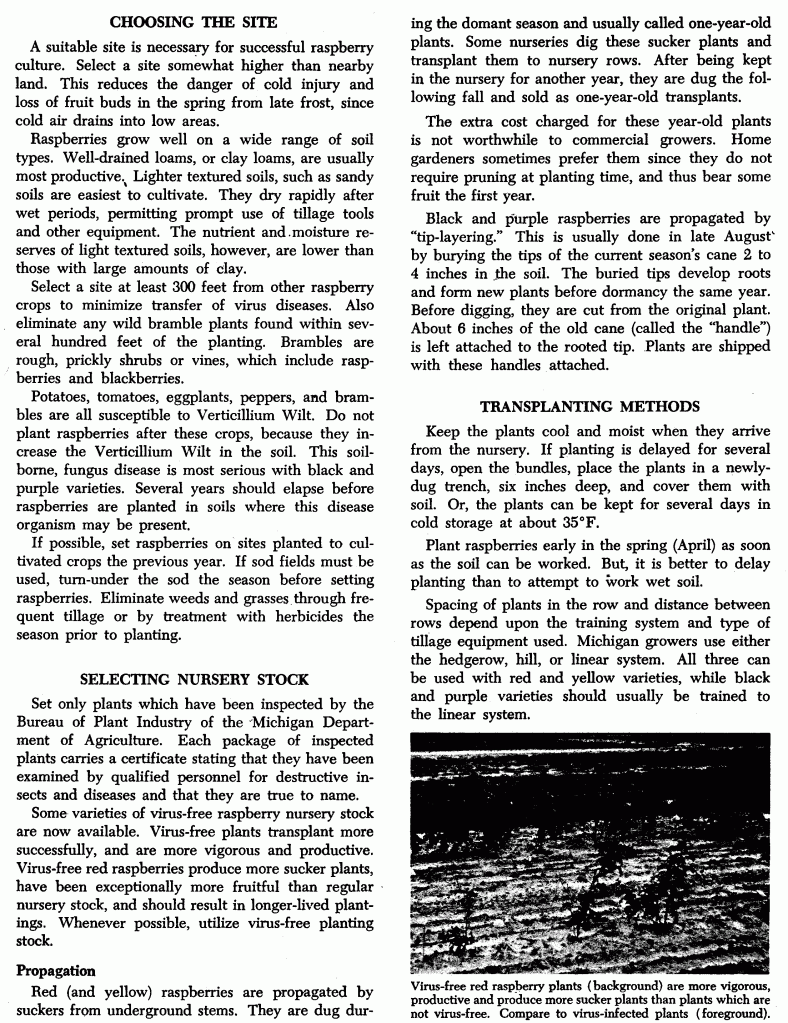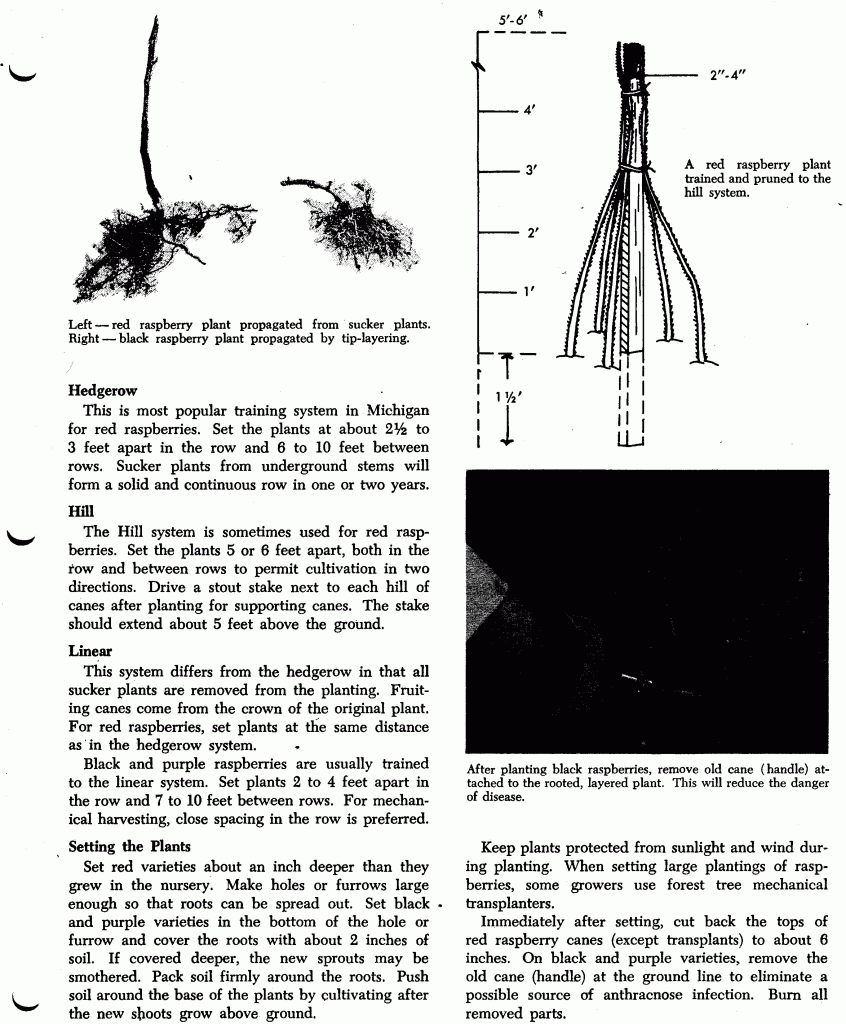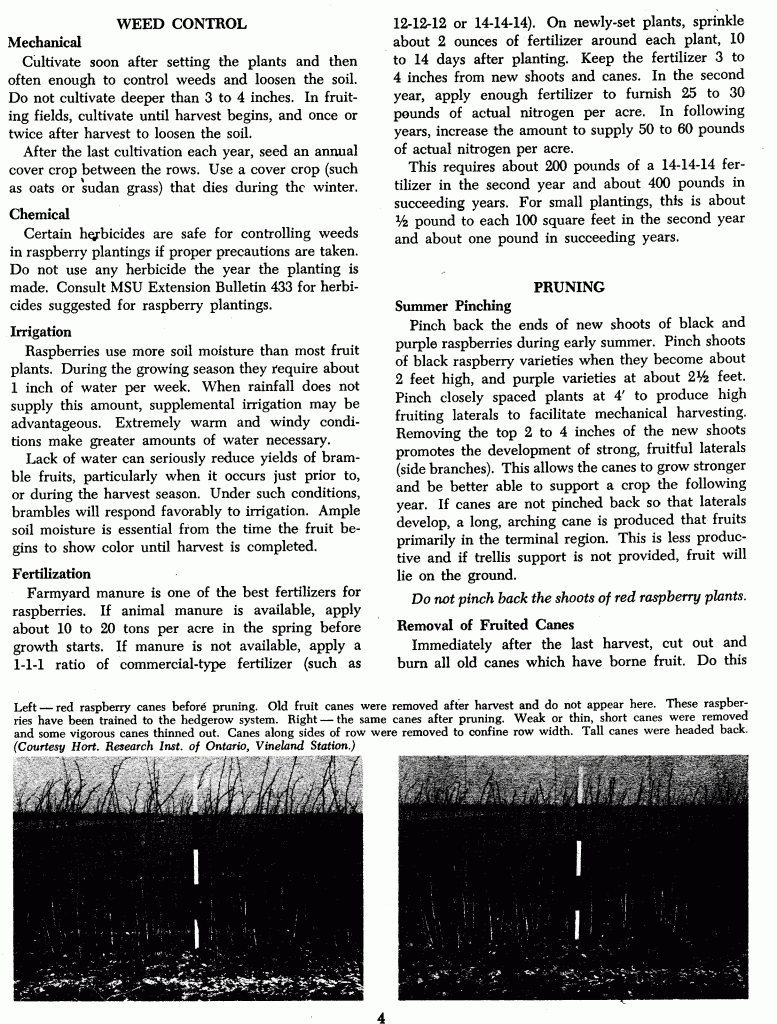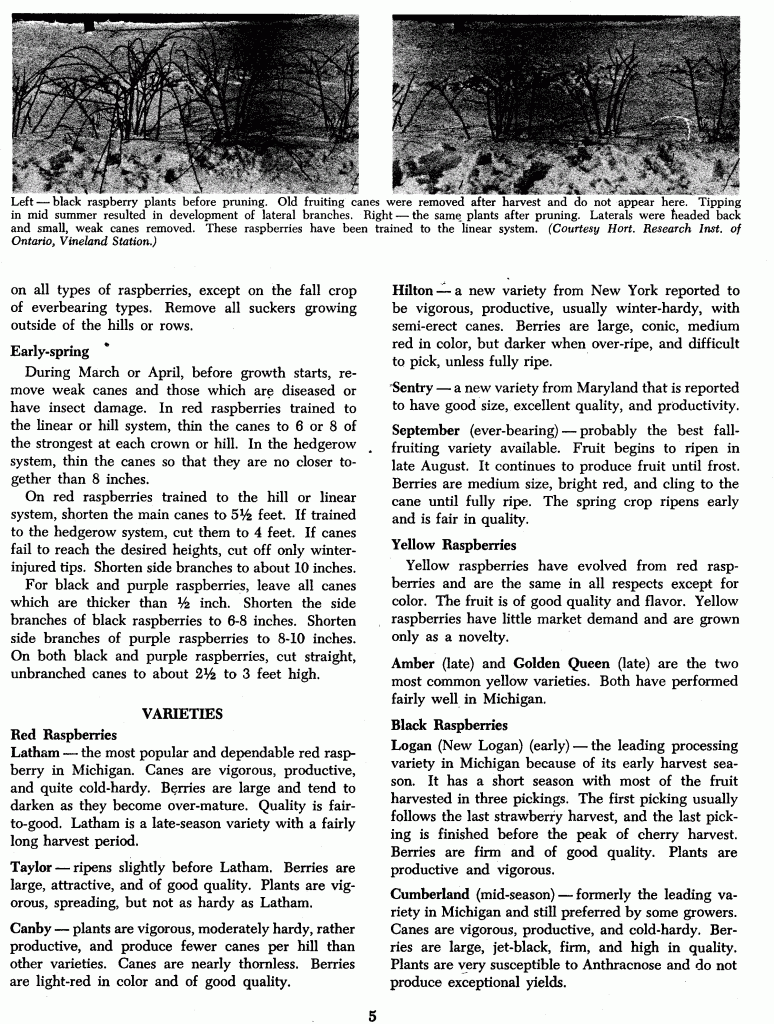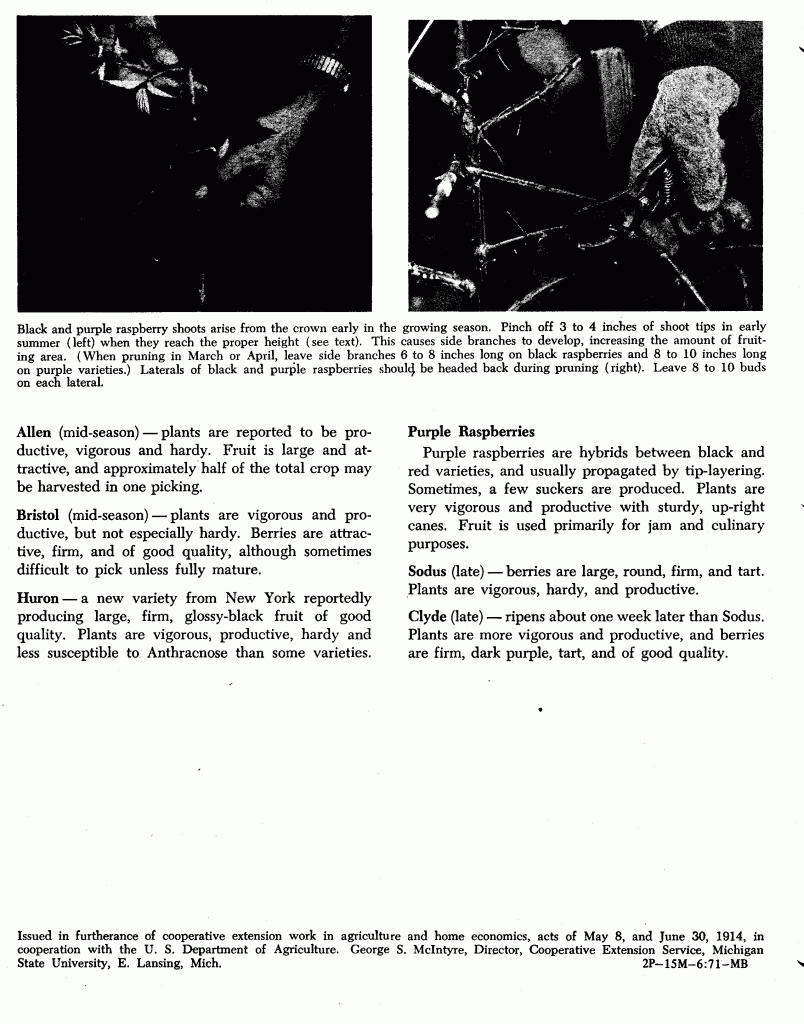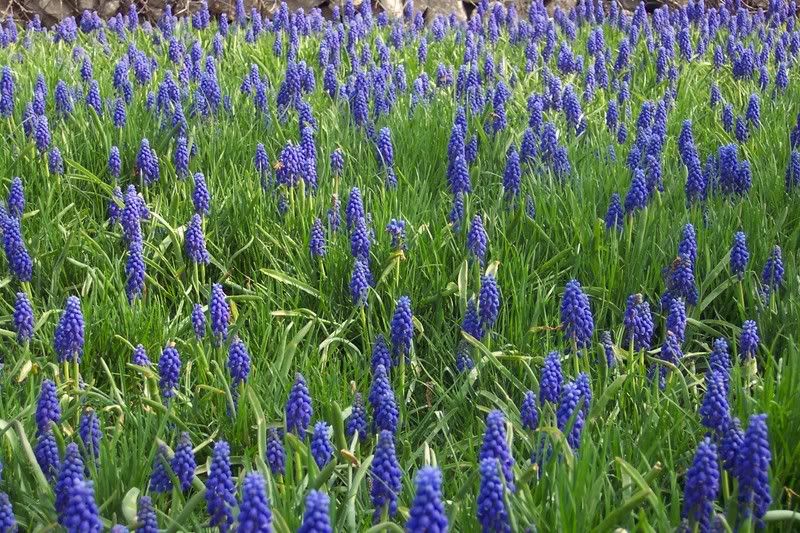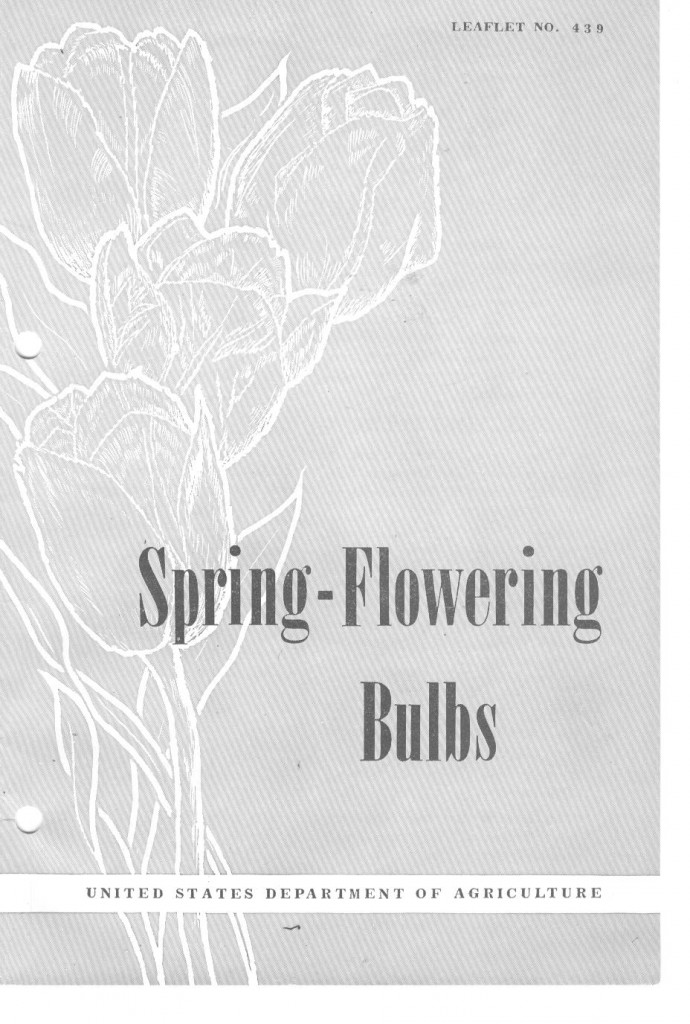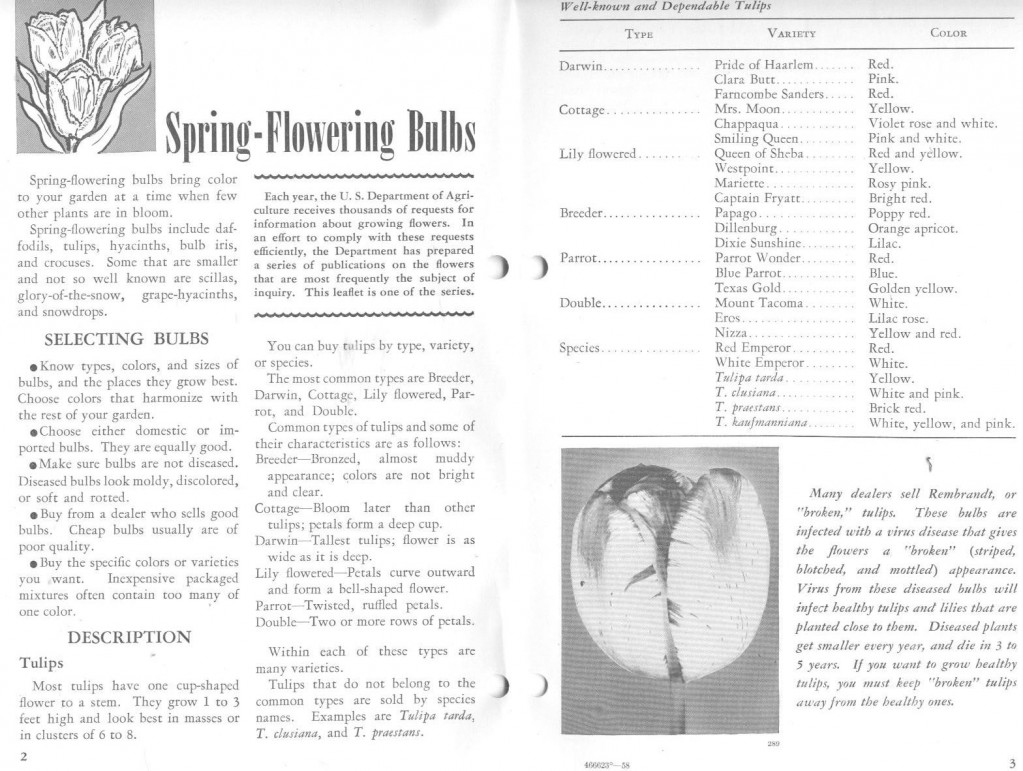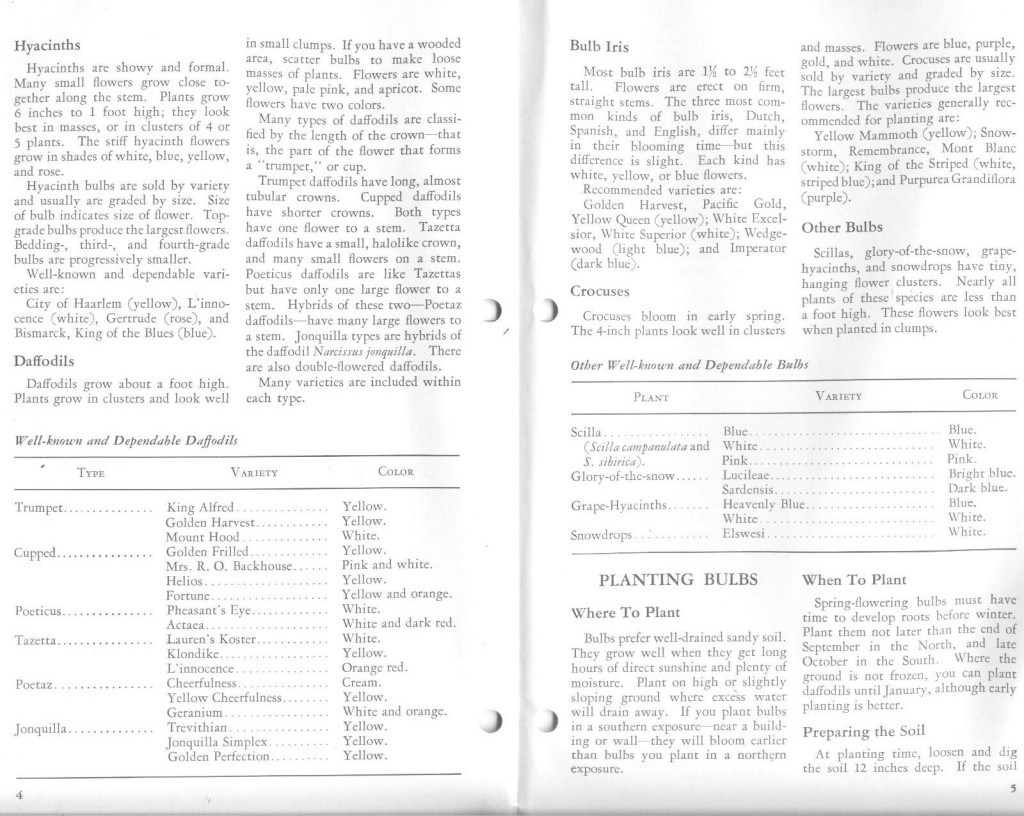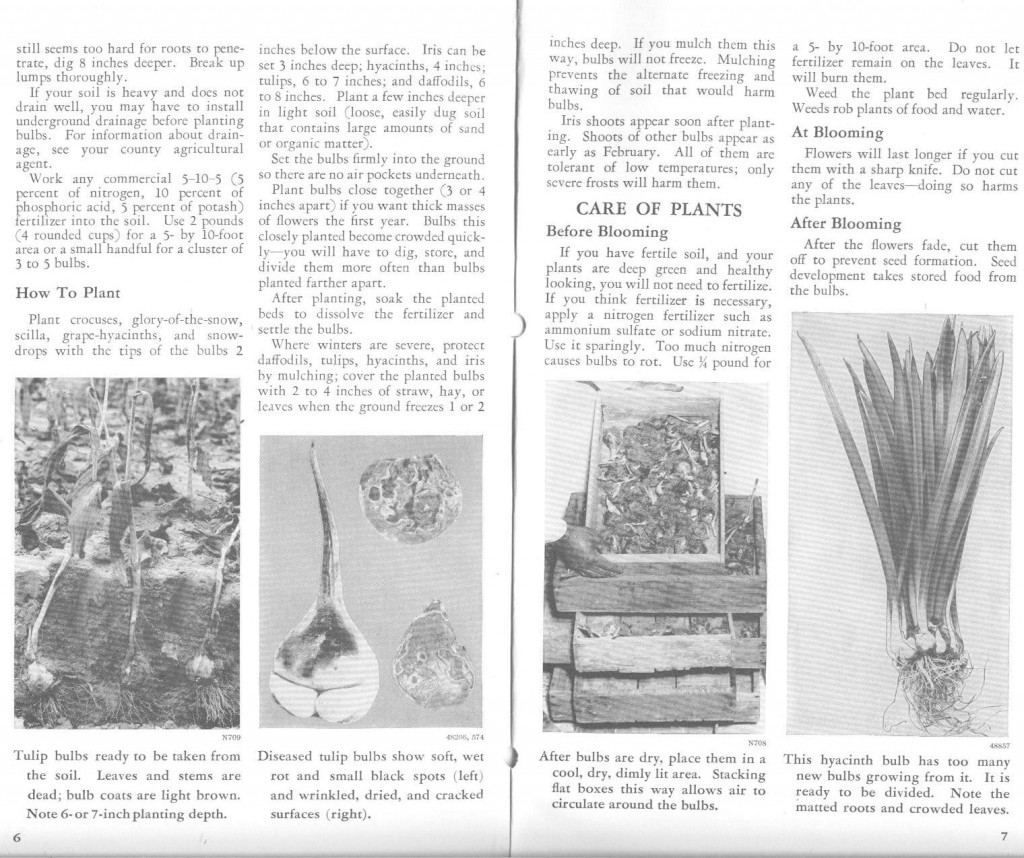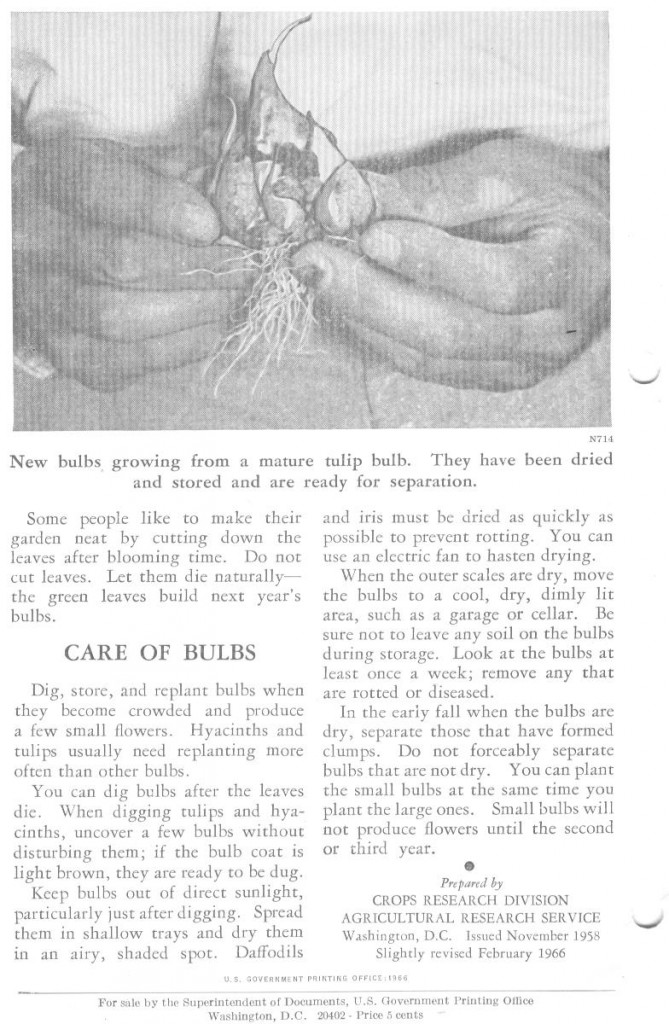One of the remaining jobs in my garden is taking care of this season’s old raspberry plants. Fortunately I have an ever-bearing variety planted.
Older gardeners will remember when most of the raspberries grown would be ripe for picking in mainly in the summer. To stretch out the season growers would have to plant an early, a mid-season and a late variety. By doing this they could harvest raspberries over a longer period of time.
The standard varieties of raspberry plants have two life cycles, the growing stage and the fruiting stage. During the growing stage no fruit is produced. When the second year rolls around the fruit is produced on those canes that grew last year. Once the raspberry patch has established itself, there will be growing canes and fruiting canes present at the same time. To confuse matters even more, once a cane has fruited, it must be removed. All of this detailed pruning must be done by hand one cane at a time.
It’s no wonder that a lot of raspberry growers have switched over to the ever-bearing varieties. Pruning is greatly simplified by growing those types. In this case all you need to do for pruning is to cut back or mow all of the canes within a couple of inches from the ground, rake them up and dispose of them. Using this method, you have one harvest that begins late in the summer and continues until fruiting is stopped by the fall frosts.

Cut fall raspberry canes just above ground level.
Some gardeners will mulch their patch after cutting back to protect the remaining raspberry crowns and roots from the winter temperatures. Usually snow cover will provide enough protection in Michigan.
Be sure you either burn the cut off canes or set them out for the trash pick up. Composting will not be effective in killing any disease organisms present in the prunings.
I have scanned an old bulletin for anyone who might be interested in the finer points of raspberry growing.
